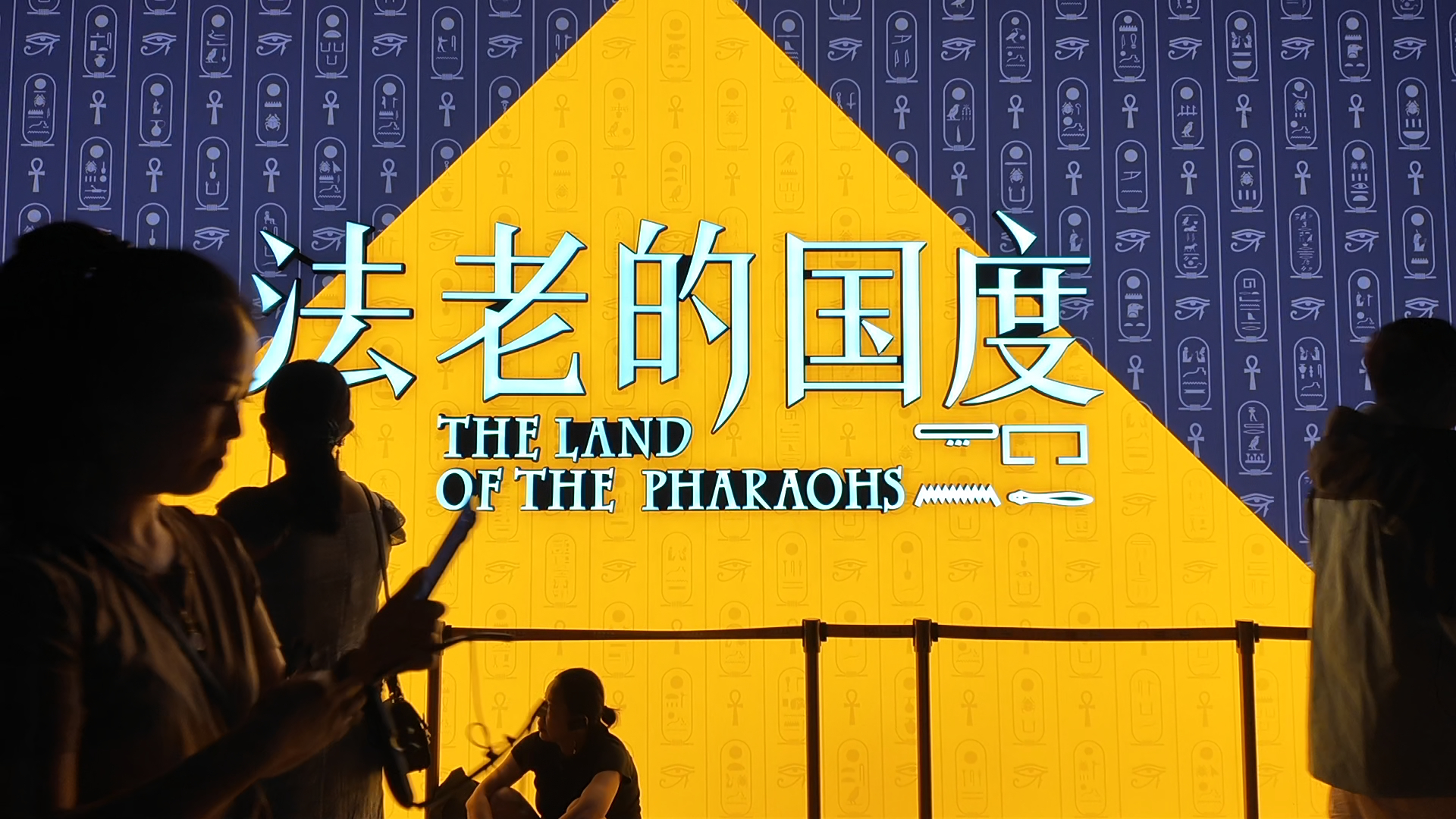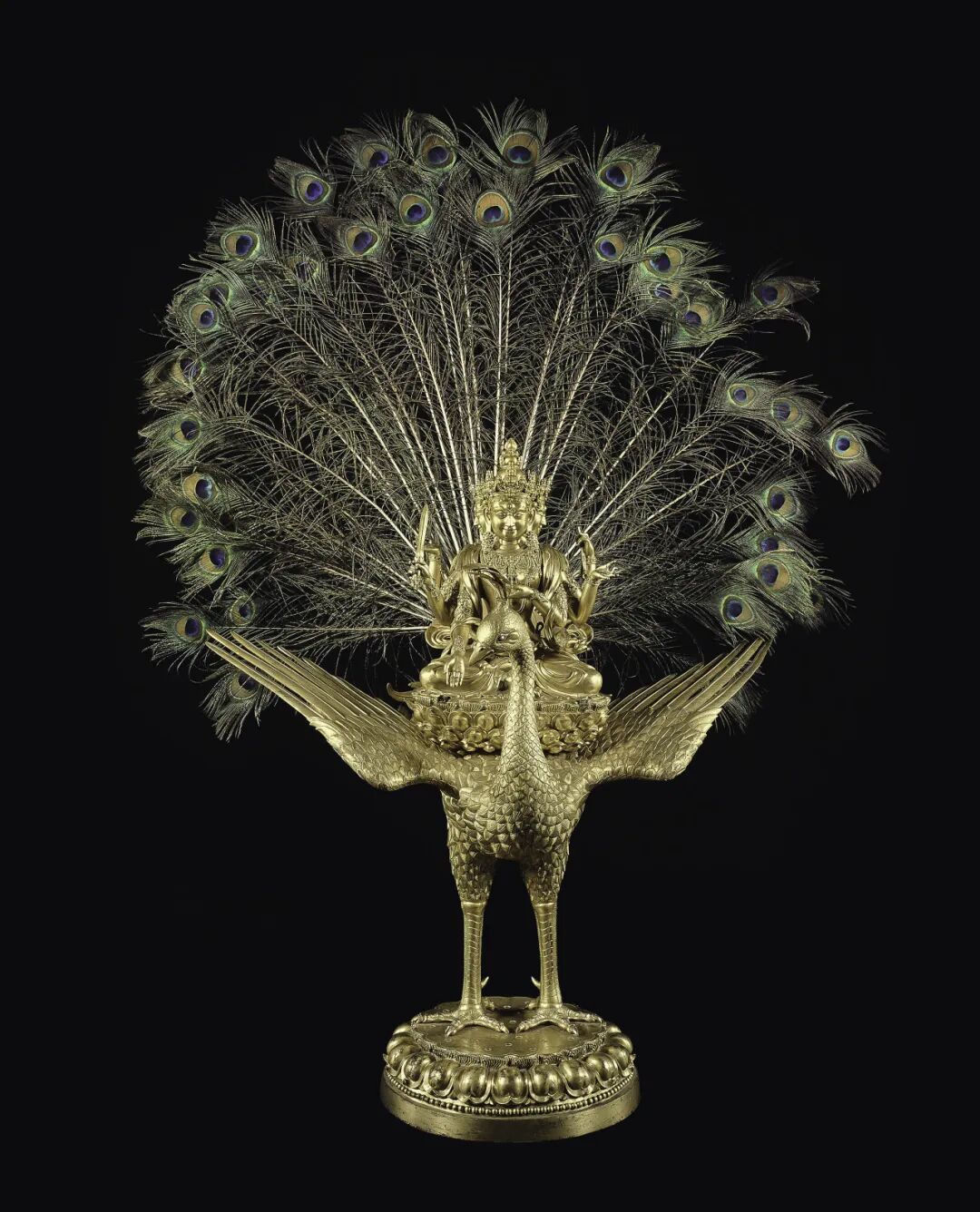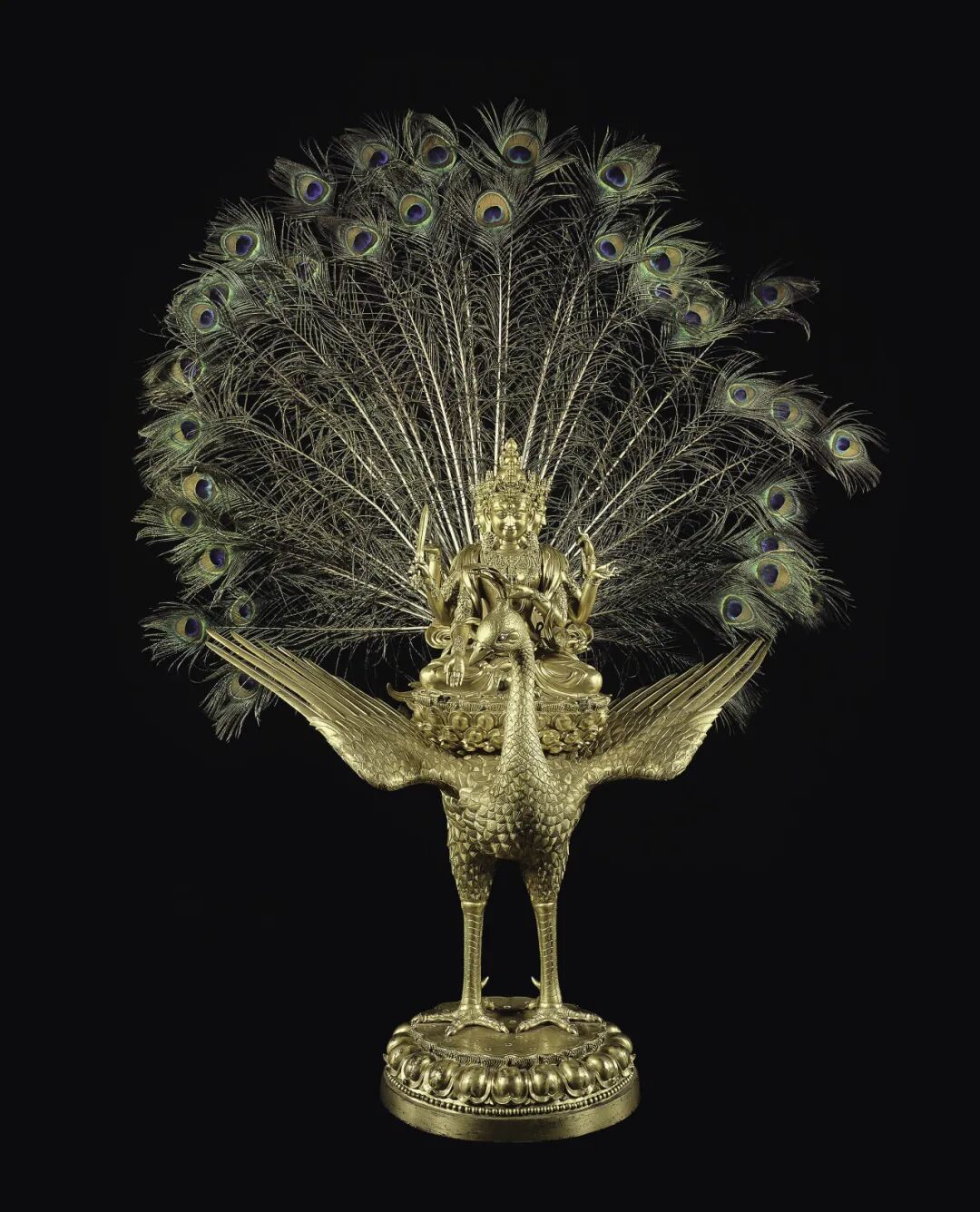
Last night marked the fifth night of the Shanghai Museum's "Ancient Egyptian Civilization" exhibition, which remained open for 168 consecutive hours (seven days and seven nights) during its final week. What were the visitor numbers like inside the museum? Who was enjoying the exhibition late at night? Curious about these and other factors, The Paper | Ancient Art explored the Shanghai Museum's nighttime atmosphere to find out.
Late at night, at the South Gate Square of the Shanghai Museum, located in the People's Square in the center of Shanghai, the statue of Meneptah stood tall under the lights, and visitors coming in and out did not forget to take a photo with it.

Late-night show, the "last train" that cannot be missed
"Come on, come on, this way in," the security guard at the Shanghai Museum noticed a few visitors lingering at the entrance. Even after midnight, visitors continued to arrive, with security checks, bag storage, and guide rentals all busy. The museum was bustling with activity, day and night.
Young couples, couples visiting the exhibition together, children still full of energy at night... The museum's late-night sessions are particularly popular with young people and families. Some of these visitors couldn't buy tickets and kept putting them off, arriving to catch the "last train" before closing time, while others wanted to avoid peak hours and enjoy a better experience.

At 0:01 on August 12, visitors swiped their ID cards to enter the museum. (Photo by Zhu Weihui, reporter of The Paper)
"The weather wasn't as hot at night, and transportation was convenient. I thought the exhibition halls would be emptier, but when I got there, I found they were still quite crowded," said Mr. Yang, a 40-year-old visitor from Shanghai. Mr. Yang is particularly interested in ancient Egyptian history and a frequent visitor to the Shanghai Museum. In 1999, while still a middle school student, he visited the Shanghai Museum to see an exhibition of ancient Egyptian art treasures co-hosted by the Shanghai Museum and the British Museum, leaving a deep impression.
"More than 20 years have passed. I didn't expect to encounter ancient Egyptian civilization again at the Shanghai Museum." "When I came to the Shanghai Museum as a child, I thought the venues here were very large, and the hardware and software facilities were very good. Now it feels crowded. One reason is that I have grown up, and the other is that more people come to see the exhibition." Mr. Yang said with a smile.

Mr. Wu, three generations of his family, visited the exhibition together
"The sculptures in ancient Egypt are incredibly skilled." Mr. Wu, who spent a long time gazing at an ancient Egyptian statue, caught the reporter's attention. He was a rare elderly visitor at the late-night show. He told the reporter that three generations of his family were at the museum together tonight. "I couldn't get tickets before, and the show is about to end, so I had to come. These exhibits might not be available even in Egypt, so this opportunity can't be missed." Mr. Wu is a museum enthusiast and always makes sure to visit local museums when traveling. He feels that late-night exhibits are less crowded and parking is more convenient. "We arrived at 12 noon and plan to go back to bed at 3 o'clock."
"Are you traveling from Hainan?" "No, I came here specifically to see the exhibition." At the Shanghai Museum's creative arts store, a reporter encountered Ms. Zheng, carrying a bag full of cultural and creative goods. "Flying all the way from Hainan specifically to see the exhibition?" Seeing the reporter's surprise, Ms. Zheng explained, "I came here just in time for two exhibitions. One is the Shanghai Museum's Ancient Egypt exhibition, which I won't have the chance to see again. I also have to stop by the Memorial Hall of the Victims of the Nanjing Massacre." Ms. Zheng said she often learns about history through exhibitions. She had been inside the museum since 4 p.m. and had already spent nine hours there. Taking advantage of the discounts, she also bought a lot of cultural and creative items, including refrigerator magnets and plush toys, which would make great souvenirs.
Sleepiness strikes, but the desire for knowledge is irresistible
A reporter from The Paper observed that even late at night, the "Land of the Pharaohs" exhibition hall was still packed with visitors wearing audio guides, attentively listening to the guided tours or manual explanations. The chronology of Egyptian history at the entrance was even more crowded, as if even late-night sleepiness couldn't quench their thirst for knowledge.

On the evening of August 11, visitors visited the "Kingdom of the Pharaohs" exhibition hall. (Photo by Zhu Weihui, a reporter from The Paper)
"The Kingdom of the Pharaohs" is an exhibition hall that tells the general history of ancient Egyptian civilization. It brings together more than half of the cultural relics in this exhibition. Due to the large number of cultural relics and the rich information content, many visitors have to stay in this exhibition hall for several hours. It is also the place with the most visitors in the exhibition hall.
"The exhibits are viewed with the eyes, but by listening to the explanations we can learn some stories about the cultural relics that we don't know," said Mr. Yang.
"This exhibition sorts out the dynasties of ancient Egypt. It is a general history exhibition and is not limited to a specific dynasty or pharaoh. There is a certain threshold for viewing the exhibition. I listened to the guided tour for five hours." said Ms. Zheng from Hainan.

On the evening of August 11, the "Kingdom of the Pharaohs" exhibition hall was crowded with people. (Photo by Zhu Weihui, a reporter from The Paper)
"I entered the museum at 1 p.m. this afternoon and haven't finished yet. I saw 'The Kingdom of the Pharaohs' last week, and today I'm mainly looking at Tutankhamun and the secrets of Saqqara." Mr. He from Jiangsu, carrying a professional camera, paused in front of each exhibit, taking photos for a long time. This was his second visit to the Ancient Egyptian Civilization exhibition. He felt the exhibition was too large to see it all in one go. His last visit to the "Kingdom of the Pharaohs" exhibition hall lasted from 2 p.m. until the museum closed. "I don't know much about ancient Egyptian history, and after seeing the exhibition, I only have a rough understanding of it. I'll probably continue to follow the exhibition after it closes and read more books about ancient Egyptian civilization."
"Eye-to-eye" with Akhenaten: A communication across time and space
In the "World of Tutankhamun" exhibition hall, visitors spontaneously formed a long line in front of the giant statue of Pharaoh Akhenaten. "Move forward a little, lift your head a little more," someone nearby, ready to take photos, pointed out the photo spots by comparing them to images on social media.

Popular photo spots on social media can create a feeling of having a conversation with cultural relics across time and space by using borrowed positions.
"By using a borrowed angle, you can create a sense of dialogue with cultural relics across time and space," Ms. Qiu, who was photographing her companions, told The Paper. "Photos from this angle initially became popular on social media because they resonated with viewers, perhaps because they all wanted to have this kind of conversation and exchange with cultural relics."

Popular photo spots on social media can create a feeling of having a conversation with cultural relics across time and space by using borrowed positions.
Ms. Qiu and her companion are from Fujian. She recently graduated from university and is about to become a Chinese language teacher. "I'm reading novels about Egypt and the Nile River, and I'm very interested in the text on the display boards, especially the ancient Egyptian myths, including the symbolic meaning of certain plants and animals. I hope to gain some writing inspiration from these texts and objects."
Ms. Qiu's way of viewing exhibitions is quite representative of the perspective of today's young people. She not only combines her professional knowledge to visit museums to seek inspiration and enlightenment, but also pursues interaction and experience with the museum, and seeks connections with cultural relics.

At 11:10 PM on August 11, the Gods NPC parade. (Photo by Zhu Weihui, reporter of The Paper)
In the exhibition hall late at night, a visitor dressed as an Egyptian priestess came towards me. "This is the first time I have changed my clothes to visit an exhibition. With the night lights, I feel like I have returned to the Egyptian era. I imagine myself as a priestess, which adds a sense of experience and mystery." At different points, you can also meet many NPCs. They play the roles of the ancient Egyptian "God of Earth" and "God of Chaos", and guide the audience participating in the script tour at fixed points.

On the evening of August 11, visitors took photos of the exhibits. (Photo by Zhu Weihui, reporter of The Paper)
The "Cat Goddess Celebration Area" is located in the cultural and creative area of the museum, providing visitors with costume experience and scripted tour activities. Costume making is a derivative of the museum's cultural and creative products, and is an immersive experience that is now more popular among young visitors and families with children. "Many visitors are very interested in Egyptian culture, and they want to dress up as a favorite figure in ancient Egyptian culture. The more popular ones are the cat god Bastet, the goddess of the sky Nut, the god of the earth, and sacrifices." A staff member of the "Cat Goddess Celebration Area" told The Paper, "Some visitors have never played scripted tours in the museum, so it's quite novel. Scripted tours are equivalent to a three-in-one combination of games, guided tours, and cultural and creative products. Playing scripted tours is equivalent to guiding players to pay attention to some cultural relics and understand related culture."
At 2:30 a.m., I walked out of the museum, the hustle and bustle of the day and the heat leaving behind me. The night breeze was refreshingly cool. Visitors sat on the stone steps outside the museum, resting. Groups of three or four wandered through the square in front of the museum, some returning home contentedly after viewing the exhibition, while others, eagerly awaiting entry, were about to enter.

Late night museum


